
03 Jul Brian: 100-hour work week
Thomas, Oklahoma–Working 9 to 5, what a way to make a living. Boy, you can say that again. While that famous song might describe some people’s work schedule, it certainly isn’t the schedule of a custom harvester. The crew went to the field the very next day after arriving in Oklahoma, and we haven’t had a moment of down time since. Working 9 to 5 has been a fantasy here in Thomas, and the crew’s 14-plus hour work days have translated into a 100-hour work week.
The crew is tired. I won’t lie. Really tired. Preparing to leave from home isn’t exactly a 9-to-5 work schedule either, and we were exhausted before we even left. The temperature has been over 90 degrees every day, and we had some triple digit temperatures a few times. With no rain in sight, one work week spills into the next without any time off. Our only reprieve has been on Sunday when the crew sleeps in just bit before we attend church. Afterwards it is a rushed lunch and then right to the field. The sun sets, the lights come on, and the long days transition into long nights. If we are lucky we arrive home from the field on the same day we leave, but bedtime has been after midnight every night since we arrived.
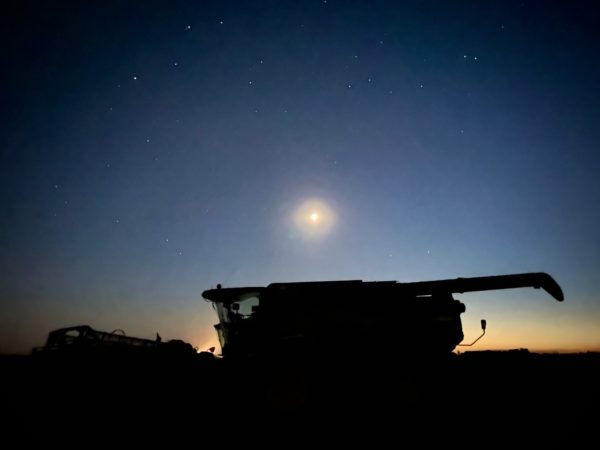
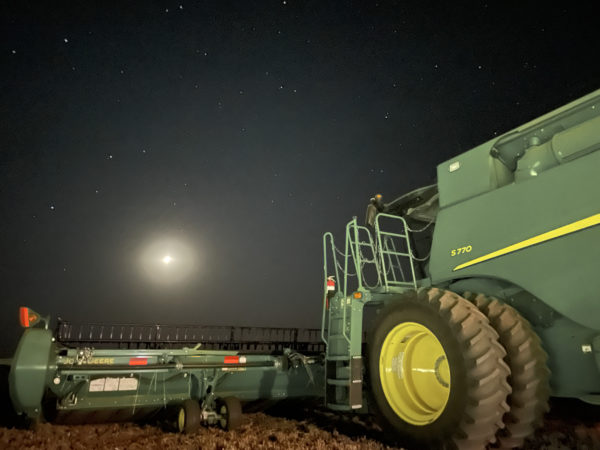

The crew has been working late into the night, often in remote areas away from any nearby town. The pitch black sky amplifies the brightness of the stars and moon, providing the perfect opportunity for night photography.
Much of the grain here is hauled to local elevators not far away, so the trucks are able to get the grain away from the machines relatively easy. This lets the truck drivers relax a little bit between loads or maybe close their eyes for a little while. It may not be a very high-quality nap, but it helps. Of course the combine operators aren’t afforded this occasional luxury. Glen has run the combine for a hopper or two between loads. This has let David and me take a quick power nap in the semi sleeper a few times, giving us a little boost to help make it through these long days.
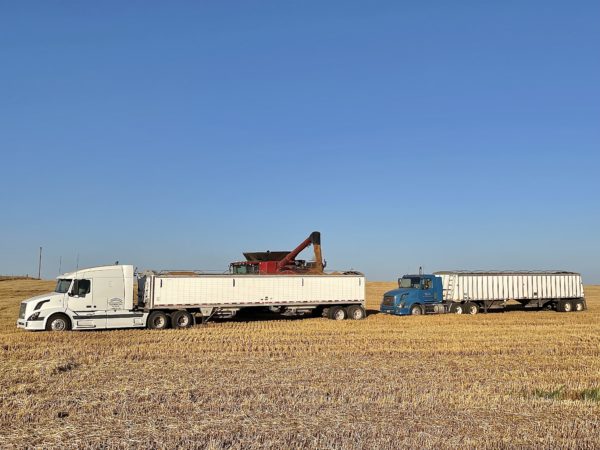
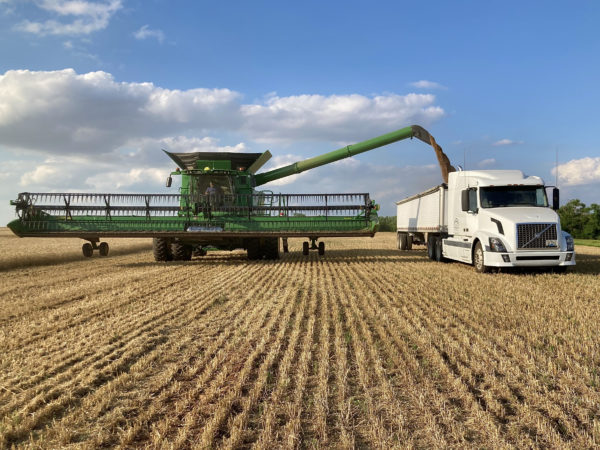
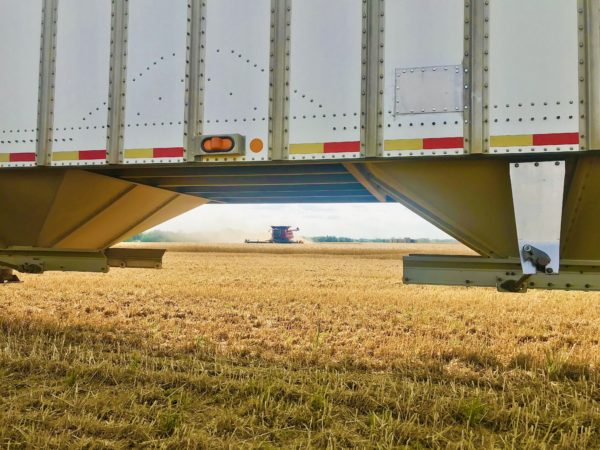
Surprisingly good yields after some very rough growing conditions mean the semis have been busy hauling grain away from the combines. The winding country roads of Oklahoma demand a lot of attention from the drivers.
The fields here are more challenging to harvest due to the terrain. Most of the fence lines wander around tree lines, ditches and ravines, creating all sorts of odd-shaped fields. It’s pretty much the polar opposite of South Dakota’s endless straight, mile-long rows. Most fields are heavily terraced, meaning the combines have to follow the contours of the fields. The combines cut the front and back of each terrace slope first, and then finish harvesting the crazy shapes that are left over. This requires a lot of turning, and sometimes the terraces are narrower than our 40-foot draper headers. These narrow channels force the combines to position themselves in such a way that only part of the header is actually cutting wheat, reducing our efficiency and greatly increasing the attention required by the operator. Auto steer can’t always be utilized, meaning there is a lot of manual steering of the machines as we stair step our way up and down the fields. It all leads to less efficiency and more operator fatigue, meaning it takes a little longer here to cover the acres.

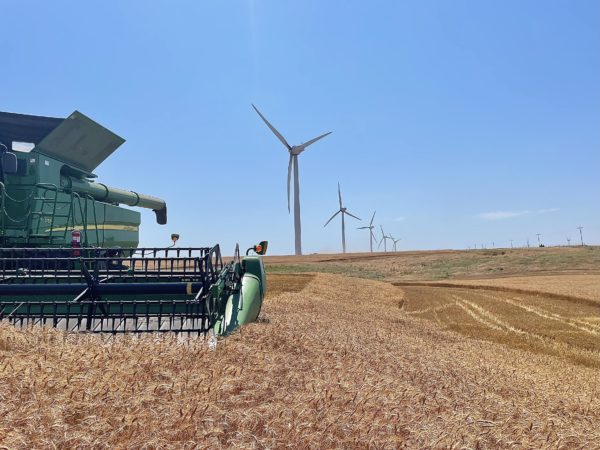

Oklahoma’s terraces mean the combines wind their way through the field, making harvest coverage maps look like abstract art. After the sun goes down finding your way back to where you were harvesting is harder than it sounds.
Thankfully we have found the wheat easy to harvest this year, with just enough height to not have to constantly micro-manage the header height to keep it from hitting the ground. It threshes easily, and the combines have moved at a faster pace than some years. After surviving some freeze damage this winter and dry weather this spring, the wheat has managed to surprise a lot of farmers here. A month ago the area was in desperate need of rain, and the wheat looked like it wouldn’t produce much at all. Thankfully weekly rains and cooler temps perked up the wheat right at the critical time of filling out the kernels. Wheat is a hearty plant, but the dramatic turnaround even surprised local farmers (in the best way possible).

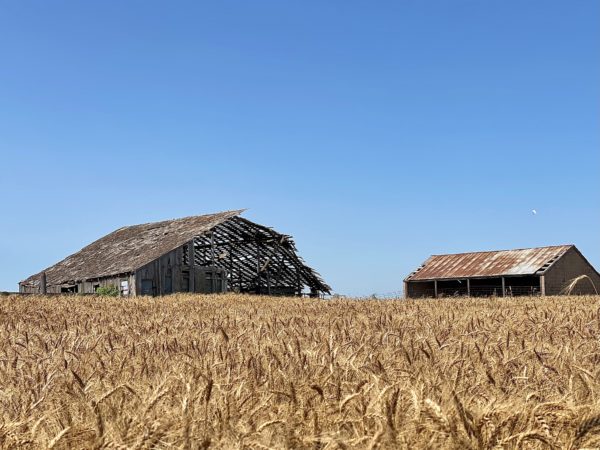
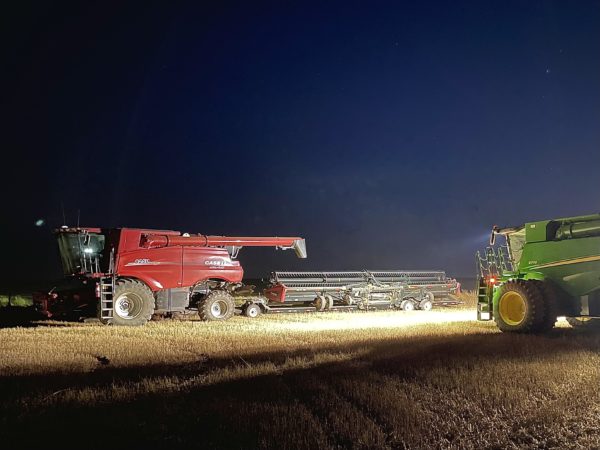
Harvesting around old buildings always makes me wonder who used to live on this land and what would they think of today’s monster combines? Late night field changes and diesel fill-ups are always harder in the dark.
Yields have averaged around 40 bushels per acre with test weights coming in right around 60 pounds. Fields that caught an extra rain shower this spring showed what the potential would have been for this crop if only the weather had cooperated a little bit more. The best field we harvested came in just over 60 bushels per acre with 65-pound test weight. Farmers are selling wheat at some of the highest prices seen in years. Pair that with the surprising yield and perfect harvest weather, and you see a lot of smiling faces around the countryside. That’s well deserved, as this area has experienced it’s fair share of tough growing seasons recently.

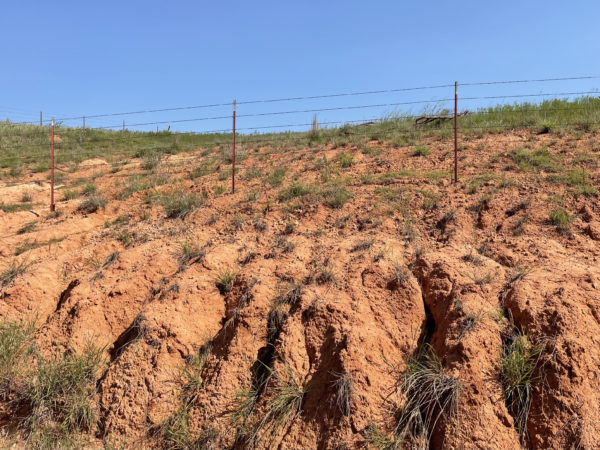
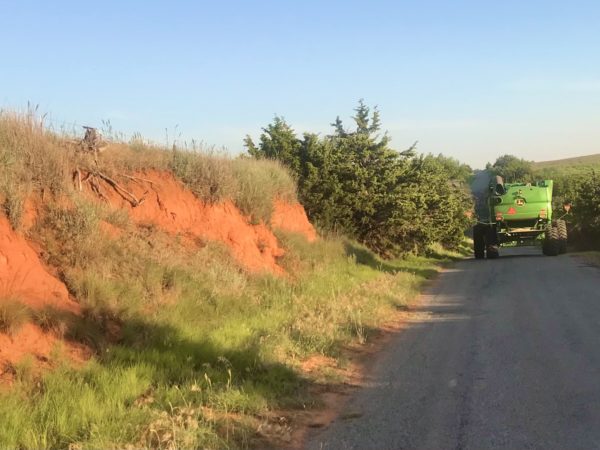
The red dirt of Oklahoma is a unique hallmark not found anywhere else. It’s a rough and tumble landscape, shaped by years of wind and rain. Moving from field to field always reveals a scenic view that’s hard to forget.
The crew has covered a lot of acres this past week, but there is plenty of work ahead of us. With many harvesters still playing catch up in Texas from all the rains, we notice the absence of other crews we would expect to be here. We have committed to a few more acres for another local farmer. His regular harvest crew is still in Texas and simply unable to be in two places at once. That’s a tough situation we have experienced too many times ourselves. We know the disappointment and financial impact of not being able to harvest a job and skipping a stop. Yet we are glad to lend a hand in getting the crop out of the field, even if it’s just a one-time thing. In this business you sometimes have to lend a helping hand, because you never know when you might need one yourself. It’s a competitive business, but wheat harvesters also share a camaraderie that is pretty unique in today’s world. When you do this job for decades one can’t help but develop friendships with other crews along the way. Perhaps we should start the Great Guild of the Golden Harvesters, complete with a secret handshake and all? Maybe it already exists. It could just be our little secret, but I’m terrible with secrets. I think I’ve said too much. What did I just say? Don’t tell anyone I told you. I should quit while I’m ahead …
I think it’s time for bed. Clearly this 100-hour work week has left me exhausted and a little bit silly. Perhaps I’ll dream about what it would be like to work a 9-to-5 job, coming home from the office and putting my feet up while I watch some TV. Who am I kidding? That sounds more like a nightmare. I know that you know there is no other place I’d rather be than in the middle of a wheat field harvesting, even if the hours get a little long. Maybe I’ll just dream about a rainy day off where I get to sleep from 9 to 5. Now that would be a dream come true!



Cotton candy clouds fade into impressive yellow and orange sunsets each night. Slowly twilight transitions into an inky darkness, punctuated by glittering stars and moonbeams that cast a gentle glow upon the nighttime harvest.
Brian Jones can be reached at brian@allaboardharvest.com.
All Aboard Wheat Harvest is sponsored by Case IH, Unverferth Manufacturing Co., Inc., BASF, Oklahoma Baptist Homes for Children, Gleaner, ITC, Westbred, Huskie, Western Equipment, US Custom Harvesters, and High Plains Journal.

Sorry, the comment form is closed at this time.